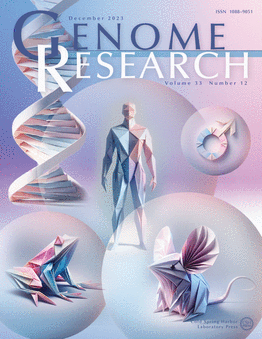Rapid and accurate demultiplexing of direct RNA nanopore sequencing datasets with SeqTagger
IF 6.2
2区 生物学
Q1 BIOCHEMISTRY & MOLECULAR BIOLOGY
引用次数: 0
Abstract
Nanopore direct RNA sequencing (DRS) enables direct measurement of RNA molecules, including their native RNA modifications, without prior conversion to cDNA. However, commercial methods for molecular barcoding of multiple DRS samples are lacking, and community-driven efforts, such as DeePlexiCon, are not compatible with newer RNA chemistry flowcells and the latest-generation GPU cards. To overcome these limitations, we introduce SeqTagger, a rapid and robust method that can demultiplex direct RNA sequencing datasets with 99% precision and 95% recall. We demonstrate the applicability of SeqTagger in both RNA002/R9.4 and RNA004/RNA chemistries and show its robust performance both for long and short RNA libraries, including custom libraries that do not contain standard poly(A) tails, such as Nano-tRNAseq libraries. Finally, we demonstrate that increasing the multiplexing up to 96 barcodes yields highly accurate demultiplexing models. SeqTagger can be executed in a standalone manner or through the MasterOfPores NextFlow workflow. The availability of an efficient and simple multiplexing strategy improves the cost-effectiveness of this technology and facilitates the analysis of low-input biological samples.求助全文
约1分钟内获得全文
求助全文
来源期刊

Genome research
生物-生化与分子生物学
CiteScore
12.40
自引率
1.40%
发文量
140
审稿时长
6 months
期刊介绍:
Launched in 1995, Genome Research is an international, continuously published, peer-reviewed journal that focuses on research that provides novel insights into the genome biology of all organisms, including advances in genomic medicine.
Among the topics considered by the journal are genome structure and function, comparative genomics, molecular evolution, genome-scale quantitative and population genetics, proteomics, epigenomics, and systems biology. The journal also features exciting gene discoveries and reports of cutting-edge computational biology and high-throughput methodologies.
New data in these areas are published as research papers, or methods and resource reports that provide novel information on technologies or tools that will be of interest to a broad readership. Complete data sets are presented electronically on the journal''s web site where appropriate. The journal also provides Reviews, Perspectives, and Insight/Outlook articles, which present commentary on the latest advances published both here and elsewhere, placing such progress in its broader biological context.
 求助内容:
求助内容: 应助结果提醒方式:
应助结果提醒方式:


